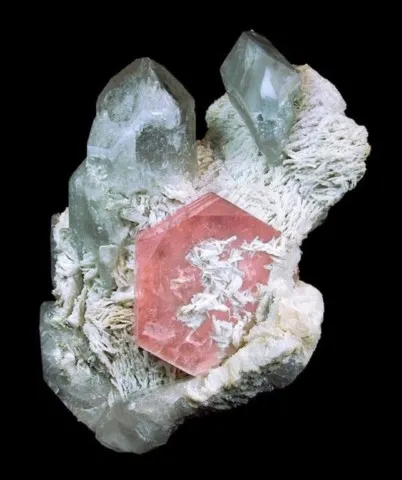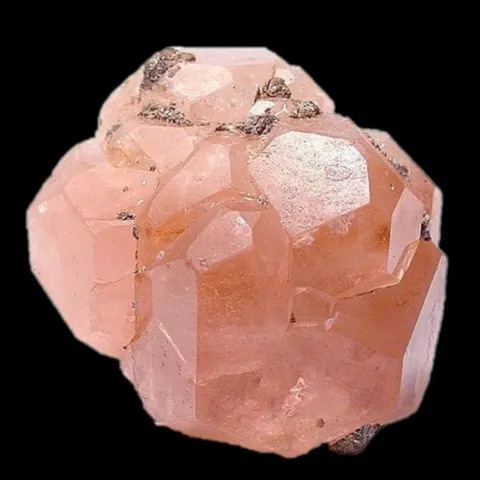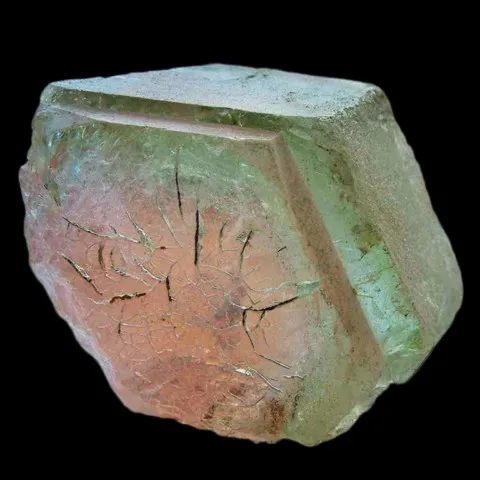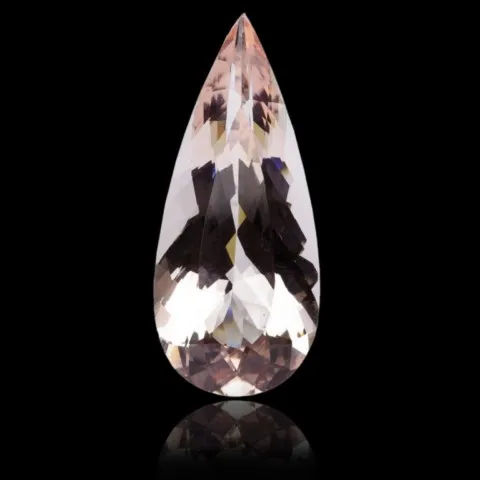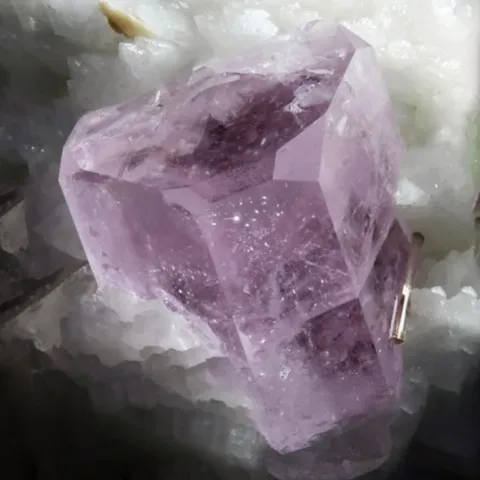MORGANITE
Class : Silicates
Subclass : Cyclosilicates
Crystal system : Hexagonal
Chemistry : BeAl2Si6O18
Rarity : Common
Morganite is a pink-colored gem variety of beryl, originally described in the Californian pegmatites of San Diego County and named after the American financier and mineral collector J.P. Morgan. It is a beryl rich in alkalis (cesium, lithium, rubidium, etc...) characterized by a tabular development of hexagonal crystals, and which is found in sodolithic pegmatites, accompanied by other lithium minerals (elbaite, lepidolite). It is widely used in jewelry.
Main photo : Morganite and quartz from Laghman, Afghanistan © Kevin Ward
Morganite in the World
Twinning
No twin known for this mineral species.
Fakes and treatments
Because of its interest in jewelry, morganite is commonly treated by irradiation to modify the color or heated to reduce the yellow and therefore make it more pink. These treatments are very difficult to detect, even in the laboratory.
Hardness : 7.5 to 8
Density : 2.63 to 2.92
Fracture : Conchoidal
Streak : White
TP : Translucent to transparent
RI : 1.568 to 1.602
Birefringence : 0.005
Optical character : Uniaxial -
Pleochroism : Visible
Fluorescence : Sometimes blue
Solubility : Hydrofluoric acid, sodium hydroxide
Magnetism : NoneRadioactivity : None

